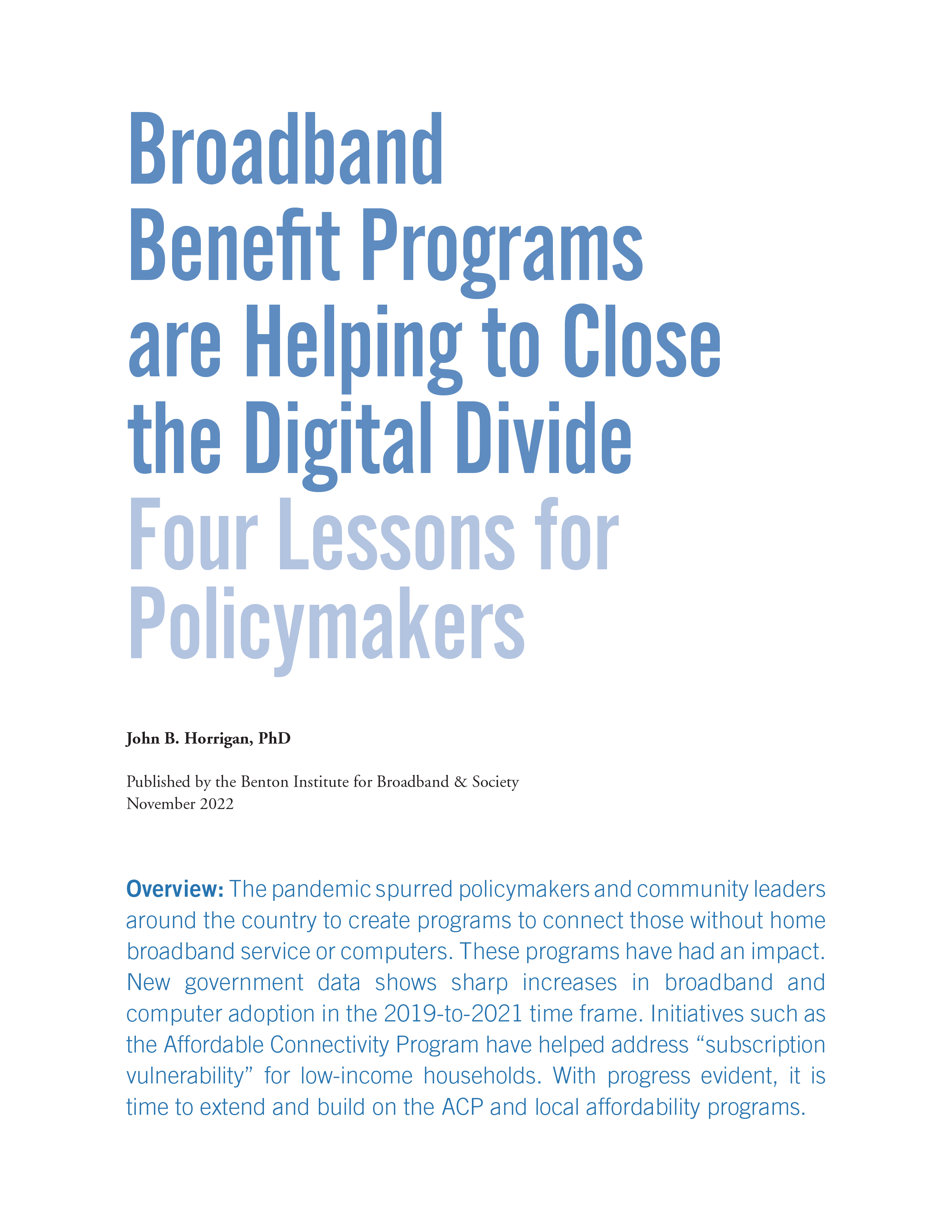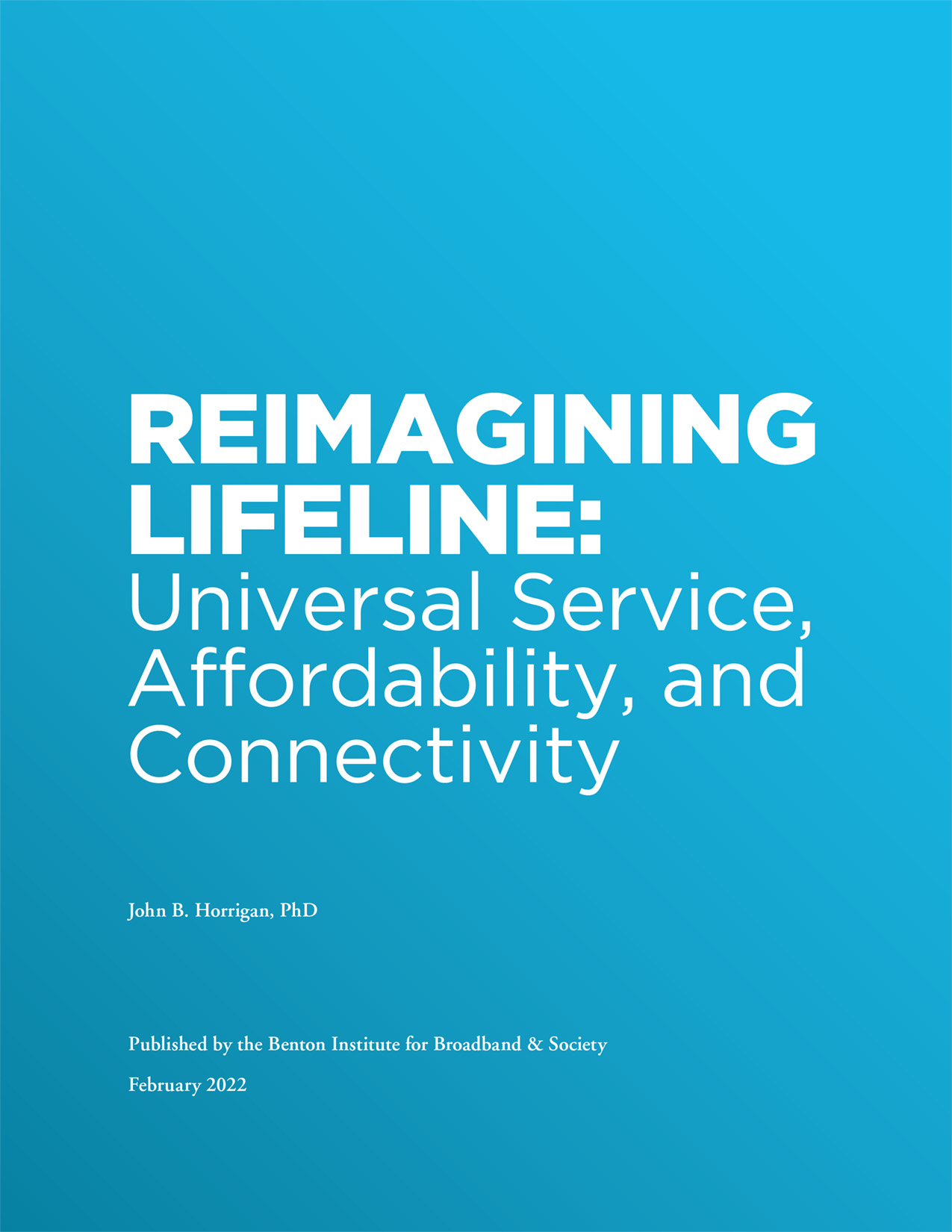John Horrigan
Half of ACP-Eligible Households Still Unaware of the Program
After a year of operation, half of all households eligible for the Affordable Connectivity Program (ACP) internet subsidy are unaware of the benefit. A January 2023 survey of low-income households finds that over 50% say they have never heard of the program or do not know anything about it. Although many eligible households are unaware of ACP, the survey points to ways in which policymakers and community leaders can encourage enrollment. First, outreach can make a difference.
Closing the digital divide in Black America
The digital divide was first recognized in the mid-1990s. Three decades later, due in part to long-standing economic inequity and the economics of broadband, it remains an impediment to inclusive economic growth, particularly in Black American communities. There are five steps that state and local leaders and broadband stakeholders could take to expand broadband access and promote digital equity and inclusion in Black communities:
It’s No Time to Disarm in the War Against the Digital Divide
The pandemic spurred policymakers and community leaders around the country to create programs to connect those without home broadband service or computers. These programs have had an impact. New government data show sharp increases in broadband and computer adoption in the 2019-to-2021 time frame. Initiatives such as the Affordable Connectivity Program (ACP) have helped address “subscription vulnerability” for low-income households. With progress evident, it is time to extend and build on the ACP and local affordability programs.
American Community Survey data show substantial increases in household wireline broadband adoption

Affordable Connectivity Plan Enrollment and Digital Equity Planning
If the federal government’s investments in broadband connectivity are to be effective, different programmatic pieces must work together. Broadband infrastructure funds are necessary to ensuring universal access, but not sufficient to achieve full digital equity. Equitable broadband adoption depends on people having the financial means to maintain service, which the Affordable Connectivity Plan (ACP) facilitates, as well as access to wrap-around digital inclusion services (such as tech support and skills training).
Diving into Digital Equity: Lessons from Focus Groups
Low-income Americans are discerning broadband consumers who are well-attuned to the nuances of service plans, in the midst of dealing with internet service bills that are often a burden on their household budgets. The indispensability of internet access—a need the pandemic has underscored—places service quality next to affordability in the minds of low-income consumers.
Three Data Points to Help Plan for Infrastructure Investment and Jobs Act Broadband Funding
As policymakers begin to plan how to use Infrastructure Investment and Jobs Act (IIJA) funds to increase broadband connectivity, there are three important data points from two recent surveys to keep in mind:
- Some 32% of households are subscription vulnerable, that is, they struggle to maintain service and have a very difficult time affording service.
-
Only 18% of cellphone-only respondents were “very satisfied” with their online access for activities such as school or work, activities that moved online during the COVID-19 pandemic.
What Policymakers Should Know About Lifeline Participants
In July 2021, the Federal Communications Commission's Wireline Competition Bureau released its report on the state of the Lifeline marketplace. The aim of the report was to identify areas for FCC consideration regarding the continued transition of Lifeline from a program that primarily supports voice services to one with a greater focus on supporting broadband Internet access service. Unfortunately, there are three critical questions I noticed the FCC’s Lifeline report did not address:
The Lifeline Market
The goal of universal service is to ensure that essential communications services are available and affordable for all. Equity remains a bedrock principle: the notion that society should take steps to ensure that all (or nearly all) citizens can use communications networks. However, whereas it was once fairly easy to identify the goal—widespread adoption of telephone service—today the situation is not as clear. Should, for instance, “universal service” include internet access? If so, at what level of service?
The Affordable Connectivity Program represents an inflection point for Lifeline and universal service.


